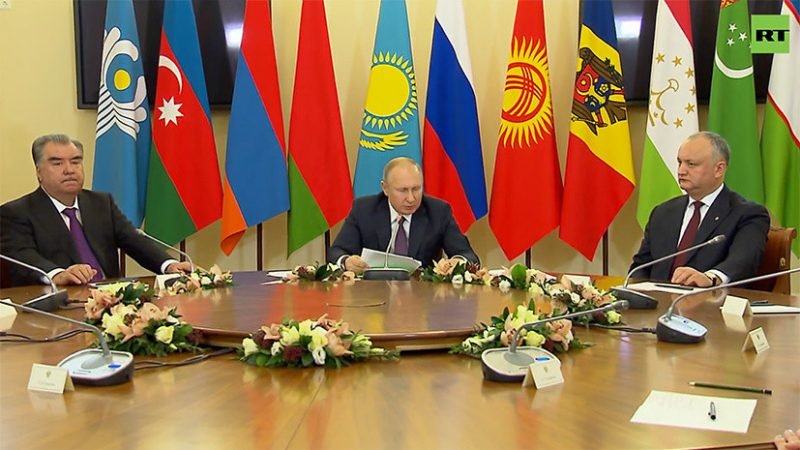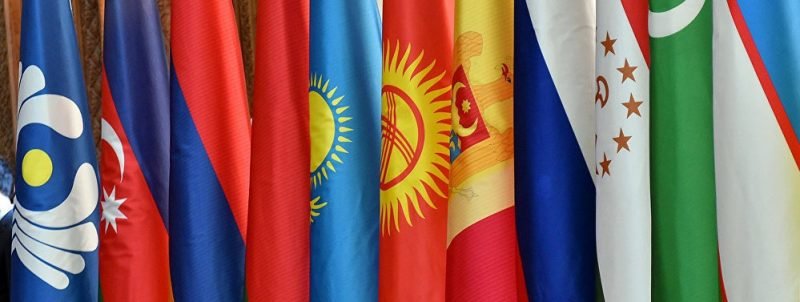Commonwealth of Independent States: Rise and Failure

Introduction
Commonwealth of Independent States (CIS) was an initiative of the post-Soviet Russian state to have a regional organization with the members as states in the former Soviet Union (FSU). It was a platform to bring the FSU states back under one umbrella under the influence of Russia. Many scholars see it as a way for Russia to reclaim its grandeur as modern Russia. This was a way through which Russia could still have relations and connection with the FSU states. Many see the rise of CIS as a way through which Russia wanted to maintain a connection with these states and fulfil its historic duty towards them. It is to be noted that there was not one policy for all CIS states. Instead, there are divergent foreign policies in constant uncomfortable interaction with each other (Sakwa, 2002). Many countries were hesitant of CIS membership and that is why the three Baltic States- Latvia and Lithuania refused to join CIS. Many analysts also view CIS as a failed example of regionalism: many post-Soviet states do not participate in CIS ventures, the institutional machinery of the CIS is weak, and Russia, the most dominant post-Soviet state, has tended to favour bilateral relationships over multilateral institutions (Kubicek, 2009).

Rise of CIS
The Ukrainian vote for independence on 1 December 1991 sealed the death warrant for the Union treaty process, and on 8 December the leaders of the three Slavic republics announced the creation of the CIS (Sakwa, 2002). Russia wanted to become a dominant partner of this organisation and continue to mark its area of influence. The provisional accords of 8 December 1991 stipulated that the CIS headquarters was to be in Minsk, the capital of Belarus. The CIS was to coordinate policy through a Council of Heads of State (CHS) and a Council of Heads of Government (CHG), both of which were to meet at least twice a year and the presidency of both councils was to rotate (Sakwa, 2002). The member state could enjoy the right to veto decisions of the council. In 1992 itself which was the initial phase of the organisation, the members met eight times, signing some 275 agreements. However, these agreements were mostly of declaratory nature and were not very fruitful lacking implementation. Selective participation in signing agreements became standard practice, with only seven out of eleven member states signing the relevant document on the establishment of the CIS Inter-parliamentary Assembly at the March 1992 Kyiv summit, only six signing the Collective Security Treaty in Tashkent in May 1992, eight delegations approving the 6 July 1992 Moscow Agreement on the status of the Economic Court, and the same with most other accords (Sakwa, 2002).
Most of the agreements fell into the category of modus vivendi agreements designed in order to prevent a total collapse of the infrastructure of the old Union. These were mainly concerned with issues such as energy, transport, payment of pensions, border forces, customs regulations and so on, and were signed by most members.
As the name suggests, the second category of agreements dealt with establishing coordinating bodies such as the Collective Security Council, a Council of Defence Ministers, a Customs Council and many others.
The member states of the CIS can also be divided into three groups:
- Russia, Kazakhstan, Kyrgyzstan, Uzbekistan and Tajikistan- extremely devoted to the concept of the CIS evolving into a closer community of nations.
- Armenia and Belarus- initially these countries were sceptical members of the CIS but with time became its most ardent supporters.
- Ukraine, Turkmenistan, Azerbaijan and Moldova- weakest relations with CIS, looking for the right time to leave the organisation.

Even though CIS was not performing well and its failure was predicted, in certain areas Russia saw it as a success. Russia, certainly, found it a useful foreign-policy instrument and sought to ensure membership in the organisation (Sakwa, 2002).
Basis of CIS:
- Forming a collective security infrastructure
- Have a semblance of economic integration like the European Union
- To retain the glory of the Soviet Union
However, Russia was not very clear on how to provide protection to states in the region. Closer economic cooperation was seen to be easier and a better option than security cooperation. Russia helped the countries with their energy requirements dependence on Russia. Russia controlled the prices, transit rights, gave assistance to states which needed gas and petroleum. Russia saw the relations with the CIS as domestic policy rather than foreign policy. The main focus was on bilateral relations and dealing with problems and signing agreements bilaterally rather than with the whole CIS. A more common view was that the states of the FSU were bound by long-time political, an economic and cultural-historical association within the Russian empire and then the Soviet Union to continue to interact (or ‘integrate’) with one another, and that to this purpose the ‘early creation of effective CIS mechanisms…must become a paramount objective of Russian diplomacy…’ (Lo, 2002). Yeltsin put it: ‘Russia is for the strengthening of the Commonwealth…[but i]ntegration must not be detrimental to Russia itself or involve the overstraining of our forces and resources, both material and financial’.
Failures of CIS
The entire CIS region feared that CIS was a way of recreating USSR and their sovereignty would be compromised- the size of Russia, the Russian language, the power of Russia and Russian economic and military power will always overpower them.
Problems faced by CIS and the region:
- Russian state offered Russian citizenship to all the member states (Dual citizenship). CIS didn’t want this because in the long run their citizens would definitely migrate to Russia for greener pastures.
- Member states saw CIS as a failure, having no future.
- Many formal agreements were signed but on the ground there was zero implementation.
- There were counter alliances coming up; within the CIS there were four such alliances.
States of the third group were slowly exiting the CIS. Azerbaijan refused to sign agreements in the defence sphere, and from March 1992 opted out of agreements on coordinating bodies in socio-economic affairs as well; Ukraine was little more enthusiastic about the common institutions of the CIS and, together with Moldova and Turkmenistan, these four states were the most opposed to the institutionalisation of the CIS (Sakwa, 2002). One of the most important contributing factors to the failure of the CIS was that it had a range of institutions but most of them lacked formal and substantive authority. Ukraine thus sought to make the CIS as weak as possible, with no permanent status and minimal staff, rejected outright the idea of a unified armed force, and objected to the CIS Charter that envisaged supra-state Commonwealth structures (Sakwa, 2002). Azerbaijan and Moldova at first appeared to be temporary members of the CIS, waiting only for an appropriate moment to leave. CIS lacked an effective institutional framework and was more of an inter-governmental than a supranational body. There was no consensus among the member states over the way that the CIS should evolve.
Moscow had no experience in conducting interstate relations with the former Union republics, and almost no trained personnel for the job. Yeltsin acknowledged in his final State of the Nation Address, the Commonwealth had ‘so far failed, both economically and politically, to develop into a reliable mechanism for ensuring conditions conducive to mutually beneficial cooperation’ ( Lo, 2002). Yeltsin also agreed on the fact that a vast majority of CIS agreements were worthless. The number of agreements signed was in no way proportional to the relations of Russia with the CIS and Russia’s commitment. There was a lack of administration interest in the FSU which accounted for this failure. Growing nationalism of FSU states was also seen as a reason for states refraining from growing closer ties with the CIS. Although CIS talked about common security but there was no common threat perception which also didn’t let states come closer to Russia. All the states wanted a national identity where Russia was always seen as the other. CIS states saw Russia as an oppressor and that was the identity of Russia for them. The ineffectiveness of CIS was rooted in Russia unable to take the lead. Russia was already had a lot of economic burdens to foster and it was not in a position to guarantee the kind of economic security these states were looking for.
References
- Sakwa, Richard (2002), Russian Politics and Society, Routledge-Taylor and Francis Group.
- Lo, Bobo (2002), Russian Foreign Policy in the Post-Soviet Era, Palgrave Macmillan.
- Kubicek, P. (2009). The Commonwealth of Independent States: An example of failed regionalism? Review of International Studies.
- Singh, Amitabh (2020), “Russia’s Relations with the CIS”, Lecture delivered on 21 April 2020 on Zoom Class, School of International Studies, Jawaharlal Nehru University: New Delhi.



















